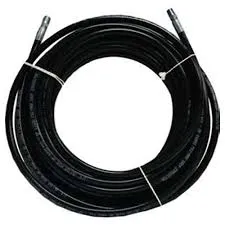Understanding Fire Pipe Coupling Techniques and Their Applications in Safety Systems
Understanding Fire Pipe Couplings An Essential Component for Safety
Fire pipe couplings play a crucial role in the firefighting infrastructure, ensuring that water is effectively transported to combat fires. These couplings connect sections of pipes and hoses, forming a reliable conduit for water supply in emergencies. As urban areas grow and industrial facilities expand, understanding the importance of fire pipe couplings becomes critical for safety management and fire prevention strategies.
What Are Fire Pipe Couplings?
Fire pipe couplings are specialized fittings designed to join two or more sections of piping together. These components are essential for creating a seamless flow of water within fire protection systems, which include fire hydrants, sprinkler systems, and standpipe systems. Typically made from durable materials such as stainless steel, brass, or aluminum, fire pipe couplings must withstand high pressure and harsh conditions commonly found in fire scenarios.
Types of Fire Pipe Couplings
There are several types of fire pipe couplings, each suited to specific applications. Some common types include
1. Threaded Couplings These are often used in smaller pipe systems, featuring male and female threads that screw together to create a tight seal. Threaded couplings are easy to install and disassemble, making them popular in maintenance applications.
2. Victaulic Couplings Also known as grooved couplings, victaulic couplings are designed for faster installation. They use a groove and clamp system to join pipe sections, allowing for flexibility and rapid assembly without the need for welding or threading.
fire pipe coupling

3. Flanged Couplings These couplings connect with flat surfaces known as flanges that are bolted together. Flanged couplings provide strong, robust connections and are typically used in larger diameter pipes or heavy-duty fire suppression systems.
4. Mechanical Couplings These couplings utilize a rubber gasket and steel components to create a watertight seal. They are popular for joining different types of pipes, including PVC and metal, offering versatility in fire protection applications.
Importance of Fire Pipe Couplings
Ensuring the reliability of fire protection systems is paramount in safeguarding lives and property. Fire pipe couplings contribute to this reliability by ensuring a secure and efficient flow of water. A compromised coupling could lead to leaks or breaks in the piping, severely affecting the performance of the firefighting system during an emergency. Regular inspection and maintenance of these couplings are essential to prevent failures.
Additionally, fire pipe couplings must meet stringent fire codes and standards set forth by organizations such as the National Fire Protection Association (NFPA). This compliance ensures that couplings are tested and approved for use in life safety applications, thus providing peace of mind to building owners and fire safety professionals.
Conclusion
In conclusion, fire pipe couplings may seem like inconspicuous components within the firefighting infrastructure, but their importance cannot be overstated. By providing the necessary connections between pipes, these fittings ensure that firefighting systems operate efficiently during emergencies. As technology advances, fire pipe couplings continue to evolve, enhancing their performance and reliability. For anyone interested in fire safety or involved in building construction and maintenance, understanding the role of fire pipe couplings is crucial in promoting a safer environment. Proper selection, installation, and maintenance of these components directly impact the effectiveness of fire protection strategies, ultimately saving lives and protecting property.
-
Ultimate Spiral Protection for Hoses & CablesNewsJun.26,2025
-
The Ultimate Quick-Connect Solutions for Every NeedNewsJun.26,2025
-
SAE J1401 Brake Hose: Reliable Choice for Safe BrakingNewsJun.26,2025
-
Reliable J2064 A/C Hoses for Real-World Cooling NeedsNewsJun.26,2025
-
Heavy-Duty Sewer Jetting Hoses Built to LastNewsJun.26,2025
-
Fix Power Steering Tube Leaks Fast – Durable & Affordable SolutionNewsJun.26,2025

